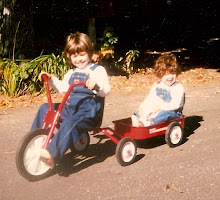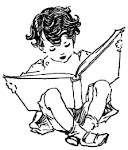Red Sings from Treetops: A Year in Colors.
By Joyce Sidman
Illustrated by Pamela Zagarenski
Brainstorm Worksheet:
Book Summary:
This book really brings color to life in an attractive and whimsical way that serves as the perfect parallel to the text. Pink hides, Green floats, Yellow and Purple hold hands, and Red . . . the reader follows the little white dog as he explores the sight, smells, and sounds of color within each season.
Lesson: The Five Senses of a Season.
Grade Level: Kindergarten
Lesson Duration: 45 minutes
Standards addressed: Science & Language Arts:
Standard: K-4: The student will demonstrate an understanding of seasonal weather changes.
K-4.3: Summarize ways that the seasons affect plants and animals.
Standard: K-1: The student will demonstrate an understanding of scientific inquiry, including the processes, skills, and mathematical thinking necessary to conduct a simple scientific investigation.
Indicator: K-1.1: Identify observed objects or events by using the senses.
Standard: K-5: The student will begin to write for a variety of purposes and audiences.
Indicator: K-5.3: Use symbols (drawings, letters, and words) to create descriptions of personal experiences, people, places, or things.
Lesson Objectives:
-The student will name all 5 senses and relate the senses to one of the four seasons.
-The student will fill out a brainstorming worksheet and use that as a tool for writing.
-The student will create a poem, using the 5 senses.
-Sidman, Joyce. (2009). Red sings from treetops. New York, NY: Houghton Mifflin Harcourt.
-Poem template (below).
-Seasons worksheet (below).
-Pencils.
-Crayons.
-Markers.
-A white board.
-A dry erase pen.
-Flip chart.
-A sharpie.
Introduction:
1. The teacher will tell the class to sit in a circle on the carpet.
2. The teacher will ask the student, if when they talk about a season are there certain images/pictures they imagine in his/her mind about things they may do during this time of year?
3. The teacher will call on students to share.
 4. The teacher will introduce the book, Red Sings from Treetops: A Year in Colors, and tell the students to pay close attention to the way the author describes the seasons in the book, such as the kinds of words used, and what specifically the author chooses to describe. The teacher will ask the students to listen to see if the author uses all 5 of the senses or just some of them and if so, which ones.
4. The teacher will introduce the book, Red Sings from Treetops: A Year in Colors, and tell the students to pay close attention to the way the author describes the seasons in the book, such as the kinds of words used, and what specifically the author chooses to describe. The teacher will ask the students to listen to see if the author uses all 5 of the senses or just some of them and if so, which ones.5. The teacher wil read the class, Red Sings from Treetops: A Year in Colors.
6.The teacher will ask the students what they noticed about what the author described about the seasons. The teacher will make a list of student responses on a flip chart. The teacher will go back through the pages with the class and look for specific words used, by rereading some of the pages.
7. The teacher will ask the student which of the 5 senses the author uses to describe the seasons. The teacher will ask the students to name the five senses as a review of what they have learned previously during the year. The teacher will make sure that the student mentions that the author uses her sense of sight, smell, and hearing to describe the seasons. The teacher will also point out that all 5 sense can be used to better describe something, such as the seasons.
8. The teacher will ask the class if they think they could choose one of the seasons and describe it, using their senses.
9. The teacher will inform the student that he/she will be writing a short poem on one of the 4 seasons of his/her preference.
 10. The teacher will explain that the student will first use a handout to think of some things and brainstorm about one of the seasons using the 5 senses. The teacher will hold up the handout. Scroll to bottom to see my handout.
10. The teacher will explain that the student will first use a handout to think of some things and brainstorm about one of the seasons using the 5 senses. The teacher will hold up the handout. Scroll to bottom to see my handout.11. The teacher will ask the class to return to their desks for a to work on the handout and then do the poem.
Procedure:
 1. The teacher will hand out The 5 Senses of a Season worksheet and write the 4 seasons on the board and draw a symbol next to each to help the studnets remember each season (Fall-a leaf, Winter-a snowman, Spring-a flower, and summer-a sun). The teacher will also write the five senses on the board with a symbol because some students may not yet be able to read words at this level (sight-eye, hear-ear, smell-nose, feel/touch-hand, and taste-mouth).
1. The teacher will hand out The 5 Senses of a Season worksheet and write the 4 seasons on the board and draw a symbol next to each to help the studnets remember each season (Fall-a leaf, Winter-a snowman, Spring-a flower, and summer-a sun). The teacher will also write the five senses on the board with a symbol because some students may not yet be able to read words at this level (sight-eye, hear-ear, smell-nose, feel/touch-hand, and taste-mouth).2. The teacher will explain the directions to filling out the handout and tell the student not to worry about spelling because this is just to brainstorm some ideas.
4. Once the students in the class are all pretty much done and the teacher has made sure everyone is on the "right track", understanding the concept, the teacher will hand out the poem template to the student. Scroll to bottom to see my template.
5. The teacher will then go over the directions for filling in the poem template and explain that once the student has finished filling in the template that he/she can start decorating the paper that it is on and the teacher will be around to check over the poem and what the he/she has written.
 6. The teacher will explain that if the student has a question he/she should stay in his/her seat and raise his/her hand and the teacher will be around to help. If the teacher is helping someone else the student should work on the illustration part of the project and remain ion his/her seat until the teacher can finish with another student and be there to help.
6. The teacher will explain that if the student has a question he/she should stay in his/her seat and raise his/her hand and the teacher will be around to help. If the teacher is helping someone else the student should work on the illustration part of the project and remain ion his/her seat until the teacher can finish with another student and be there to help.7. The teacher will hand out markers and crayons to each table and ask if there are any general questions before the student starts filling in his/her poem.
8. The student will work on his/her poem and the teacher will circulate around the room with a clipboard and class list/matrix to jot down and observations and/or notes about certain students noticed during the activity.
9. Once all students are done, the teacher will draw 3-4 popsicle sticks (time permitting) and ask those students to share their poems with the rest of the class.
10. The teacher will hang the students' poems on the wall (some point that day/week).
Template/Example of Poem:
** Note: In first blank, the student will write the season of his/her choice and in the second, the word related sense. On the last line the student will fill in the season he/she chose.
Name: Sarah Sample
Title: Summer Is...
Summer looks like the beach.
Summer smells like barbeque.
Summer sounds like fireworks.
Summer feels like jumping on a trampoline.
Summer tastes like lemonade.
I like Summer.
Handout:


























No comments:
Post a Comment